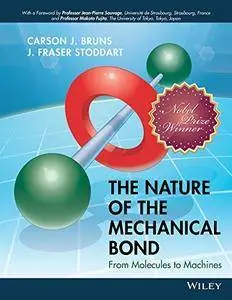The Nature of the Mechanical Bond: From Molecules to Machines by Carson J. Bruns, J. Fraser Stoddart
November 7, 2016 | ISBN: 1119044006 | English | 786 pages | PDF | 156 MB
November 7, 2016 | ISBN: 1119044006 | English | 786 pages | PDF | 156 MB
“The story is told by THE inventor-pioneer-master in the field and is accompanied by amazing illustrations… [it] will become an absolute reference and a best seller in chemistry!” Alberto Credi
“… the great opus on the mechanical bond. A most impressive undertaking!” Jean-Marie Lehn
Congratulations to co-author J. Fraser Stoddart, a 2016 Nobel Laureate in Chemistry.
In molecules, the mechanical bond is not shared between atoms—it is a bond that arises when molecular entities become entangled in space. Just as supermolecules are held together by supramolecular interactions, mechanomolecules, such as catenanes and rotaxanes, are maintained by mechanical bonds. This emergent bond endows mechanomolecules with a whole suite of novel properties relating to both form and function. They hold unlimited promise for countless applications, ranging from their presence in molecular devices and electronics to their involvement in remarkably advanced functional materials. The Nature of the Mechanical Bond is a comprehensive review of much of the contemporary literature on the mechanical bond, accessible to newcomers and veterans alike. Topics covered include:
-Supramolecular, covalent, and statistical approaches to the formation of entanglements that underpin mechanical bonds in molecules and macromolecules
-Kinetically and thermodynamically controlled strategies for synthesizing mechanomolecules
-Chemical topology, molecular architectures, polymers, crystals, and materials with mechanical bonds
-The stereochemistry of the mechanical bond (mechanostereochemistry), including the novel types of dynamic and static isomerism and chirality that emerge in mechanomolecules
-Artificial molecular switches and machines based on the large-amplitude translational and rotational motions expressed by suitably designed catenanes and rotaxanes.
This contemporary and highly interdisciplinary field is summarized in a visually appealing, image-driven format, with more than 800 illustrations covering both fundamental and applied research. The Nature of the Mechanical Bond is a must-read for everyone, from students to experienced researchers, with an interest in chemistry’s latest and most non-canonical bond.



